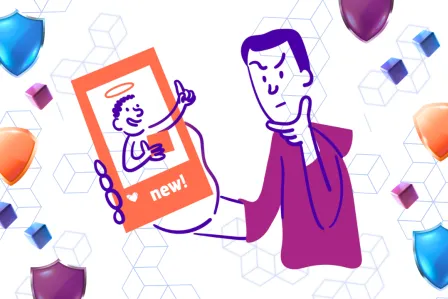
Children and teens – just like adults – may not always realise when something online is
- an advertisement,
- a hidden promotion,
- a paid post by an influencer.
It can also be hard to spot how apps, games or websites try to convince us to spend more time or money. This can lead to overspending, or habits that are hard to break.

What platforms need to do:
 | Clearly and consistently label all advertising and sponsored content – including influencers product placements |
 | Regularly review how ads are labelled, and check with children and caregivers that labels are clear and effective |
 | Avoid advertising to children and teenagers products and services that could harm privacy, safety, and security |
 | Be transparent about the costs and implications of:
|
 | Avoid pressure tactics like:
|
 | Block access to any feature that resembles gambling, like loot-boxes; |
 | Ensure “free” products and services don’t include hidden purchases; |
 | Make sure advertising is age-appropriate; |
 | Adapt advertising algorithms so children are not exposed to ads too much or too often. |
Why this matters to you: these measures can help to protect kids and teens from being tricked or pressured into spending money when they don’t want to.
What do these terms mean?
A product placement is when a brand or item is shown in a video or post as part of a paid promotion.
A loot box is a digital item that gives random rewards, often used in games.
An in-app purchase is something you buy inside an app, like extra lives, skins or virtual coins.
Further information and resources
Do you want to learn more about the DSA? Check out this booklet, explaining the measures to protect kids and teens online.
The DSA explained

Children and teens – just like adults – may not always realise when something online is
- an advertisement,
- a hidden promotion,
- a paid post by an influencer.
It can also be hard to spot how apps, games or websites try to convince us to spend more time or money. This can lead to overspending, or habits that are hard to break.

What platforms need to do:
 | Clearly and consistently label all advertising and sponsored content – including influencers product placements |
 | Regularly review how ads are labelled, and check with children and caregivers that labels are clear and effective |
 | Avoid advertising to children and teenagers products and services that could harm privacy, safety, and security |
 | Be transparent about the costs and implications of:
|
 | Avoid pressure tactics like:
|
 | Block access to any feature that resembles gambling, like loot-boxes; |
 | Ensure “free” products and services don’t include hidden purchases; |
 | Make sure advertising is age-appropriate; |
 | Adapt advertising algorithms so children are not exposed to ads too much or too often. |
Why this matters to you: these measures can help to protect kids and teens from being tricked or pressured into spending money when they don’t want to.
What do these terms mean?
A product placement is when a brand or item is shown in a video or post as part of a paid promotion.
A loot box is a digital item that gives random rewards, often used in games.
An in-app purchase is something you buy inside an app, like extra lives, skins or virtual coins.
Further information and resources
Do you want to learn more about the DSA? Check out this booklet, explaining the measures to protect kids and teens online.
The DSA explained
- DSA (Digital Services Act)












